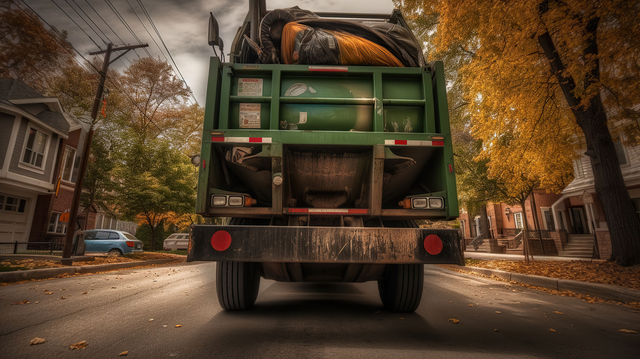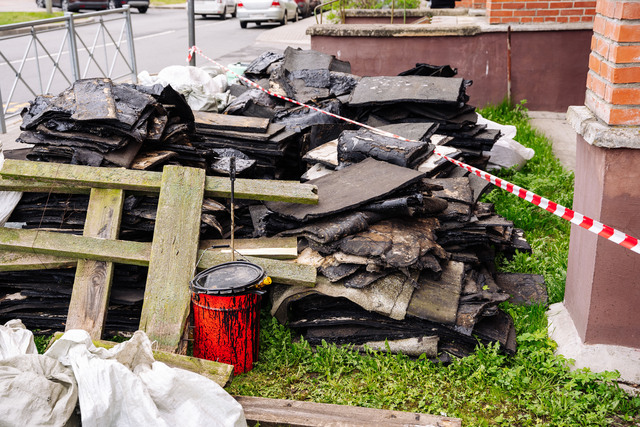Whether you have a significant home makeover, clearing out an overflowing garage, or managing a construction project, you’ll need to rent a dumpster in NJ to handle the debris. Gauging how much weight capacity when renting a dumpster will be part of this process. You’ll need to know the weight limit of your chosen dumpster size and use a weight calculator to get an accurate estimate.
Camarato Disposal has been providing dumpster rental and waste management services in Toms River, New Jersey since 1998. We serve Ocean County, Monmouth County, Middlesex County, and Mercer County.

As a family-owned and operated business, we offer a range of services from NJ dumpster rentals to dump truck rentals, construction recycling, scrap metal disposal, and demolition services. We are dedicated to delivering efficient, eco-friendly, and compliant waste management solutions for both residential and commercial clients.
We offer a variety of dumpster sizes, including 10 yard, 15 yard, 20 yard, 30 yard, and 40 yard containers. Each size comes with its own weight limit to accommodate different kinds of materials, from scrap metal to concrete, drywall, carpet, shingles, and more. It’s not just about filling up the space, it’s also about ensuring you don’t exceed the weight limit of the dumpster. Overloading can lead to additional fees and safety issues.
Weights and Measures of Materials When Renting A Dumpster in NJ

Construction Debris
When dealing with a construction project, your dumpster rental will likely be filled with materials such as concrete, drywall, scrap metal, carpet, and shingles. Each of these materials has a different weight per yard, which can significantly impact your dumpster’s weight limit.
Concrete is one of the heaviest construction materials, averaging about 2,040 lbs per cubic yard for broken concrete or 4,050 lbs for a cubic yard of solid concrete.
Drywall, on the other hand, is considerably lighter, with an average weight of around 500 pounds per yard.
Scrap metal can vary greatly, but generally weighs around 1,000 pounds for every cubic yard.
Carpet is lighter still, averaging approximately 300 pounds per cubic yard.
Shingles weigh around 250 pounds to each cubic yard. But the weight of shingles is typically estimated in squares or bundles. Generally, three bundles of asphalt shingles are enough to cover one roofing square (100 square feet). A bundle of three-tab asphalt shingles weighs between 60 pounds and 80 pounds. A square weighs between 180 pounds and 240 pounds.
Shingle weights will vary depending on the quality and type of shingle. Architectural shingles weigh between 70 pounds and 80 pounds per bundle. Slate shingles weigh much more, between 250 pounds and 350 pounds per bundle.
Keep in mind that these are average weights, and the actual weight can vary based on the specific type and condition of the material.
Household Waste
Household waste is typically lighter than construction debris. It includes items like furniture, appliances, clothing, and general clutter. On average, household waste weighs around 250-300 pounds per yard. However, remember that larger items like furniture and appliances can quickly add to this weight.
Yard Waste
Yard waste encompasses materials like leaves, grass clippings, branches, and soil. This type of waste is relatively light, with an average weight of about 500-600 pounds per cubic yard. However, heavier materials like soil or wet garden waste can exceed this average.
Density, Volume, and Weight
The density and volume of the material you’re disposing of can greatly affect its weight. For example, a cubic yard of loose, fluffy insulation will weigh much less than a cubic yard of compacted concrete. Consider not just the volume of your materials (how much space they take up) but also their density (how tightly packed they are) when estimating your dumpster’s weight.
Weight Restrictions and Disposal Costs
Every dumpster rental comes with weight restrictions. Exceeding these restrictions can lead to additional disposal costs. It’s essential to understand how many pounds your chosen size dumpster can hold to avoid these extra charges.
When selecting a dumpster size, it’s not just about volume. You need to consider the weight of your materials too. For example, if you’re disposing of a lot of heavy construction debris like concrete, you may need a larger or even multiple dumpsters to stay within the weight limit.
The Importance of Proper Dumpster Size Estimation When Renting A Dumpster
When renting a dumpster for your project, whether you’re dealing with construction debris, household waste, or yard waste, one key aspect you cannot overlook is the importance of proper weight estimation. This is not just about meeting the weight restrictions of your dumpster rental; it’s also about managing your project costs effectively and avoiding potential complications down the line.
Renting A Dumpster in New Jersey: The Cost of Incorrect Estimation
Imagine this scenario: You’re undertaking a renovation project and have a large amount of scrap metal to dispose of. You estimate the scrap metal weigh to be around 1,000 pounds and rent a dumpster accordingly. However, when it comes time for the dumpster to be hauled away, you find out that the actual weight of the scrap metal was closer to 2,000 pounds. You’ve exceeded the weight limit of your dumpster, and now you’re faced with additional overage fees.
This situation is more common than you might think and can lead to unexpected costs that can stretch your project budget. Overestimating the weight can also lead to unnecessary costs, as you might end up paying for a larger dumpster than you actually need.
The Benefits of Accurate Estimation
On the other hand, accurately estimating the weight of your materials can save you both time and money. When you know the estimated weight value of your materials, you can choose the right size dumpster for your needs from the start, avoiding the need for multiple hauls or the risk of overage fees.
Proper weight estimation also allows you to plan your project more effectively. You’ll know in advance if you need to schedule multiple dumpster rentals or if a single dumpster will suffice. This can help keep your project on schedule and reduce potential downtime waiting for additional dumpsters.
Accurate weight estimation can also contribute to more responsible waste management. By understanding the weight of your materials, you can make more informed decisions about recycling and disposal, potentially diverting waste from landfills and contributing to environmental sustainability.
Tools and Techniques for Estimating Weight: Your Guide to Accurate Dumpster Rental Planning
When it comes to dumpster rental and waste management, whether you’re in Toms River, New Jersey, or anywhere else across the states, one of the most crucial aspects is accurately estimating the weight of the waste materials. With a company like Camarato Disposal, which provides a variety of container sizes ranging from 10 yard to 40 yard, understanding the weight of your debris is vital to avoid overage charges and ensure efficient disposal. Thankfully, there are several tools and techniques available to help with this process.
Online Calculators When Renting A Dumpster
One of the most accessible tools is an online calculator to calculate the estimated weights. These calculators allow you to input the type and volume of material you have, and they will provide an estimated weight value. There are specific calculators available for different types of materials, such as a scrap metal, concrete weight calculator, drywall weight calculator, carpet weight calculator, and shingle weight calculator.
To use an online weight calculator, follow these steps:
- Select the type of material you have.
- Enter the volume of the material in cubic yards.
- The calculator will then provide an estimated weight for the material.
Remember, these calculators provide estimates, and the actual weight may vary based on factors like the exact composition of the material and its condition.
Volume-to-Weight Conversion Charts
Another useful tool for weight estimation is a volume-to-weight conversion chart. These charts provide average weights for different types of materials per cubic yard. For example, a chart might tell you that scrap metal typically weighs around 1,000 pounds per cubic yard, while drywall averages about 500 pounds per cubic yard.
To use a conversion chart, follow these steps:
- Measure the volume of your material in cubic yards.
- Find the material on the conversion chart.
- Multiply the volume of your material by the average weight listed on the chart.
Again, these are average weights, and the actual weight may vary.
Scales
For smaller projects or if you’re dealing with a single type of material, using a scale can be a straightforward way to estimate weight. This method involves weighing a known volume of the material and then extrapolating to determine the weight of the full volume.
To use a scale, follow these steps:
- Collect a known volume of the material (for example, one cubic foot).
- Weigh this sample on a scale.
- Multiply the weight of the sample by the total volume of material you have (in the same units).
While this method can be more time-consuming and requires access to a scale large enough to weigh your sample, it can provide a more accurate estimate, particularly for homogeneous materials.
Weight Estimation Importance
Accurate weight estimation is paramount when considering dumpster rental for your project. Whether it’s renovation debris, household waste, or yard scraps, knowing the weight of your materials can save time, money, and helps in responsible waste management. Tools like online calculators, volume-to-weight conversion charts, and scales can assist in this process, offering varying degrees of precision based on the specifics of your project.
Keep in mind that these tools provide estimates and the actual weight may differ. However, leveraging these resources will undoubtedly minimize the risk of unexpected overage charges and contribute to the overall efficiency of your waste disposal plan.
Why is dumpster weight measured by the cubic foot and not a square foot when renting a dumpster?
Dumpster weight is measured by cubic yards, not square feet or cubic feet because waste disposal involves volume, not just area. A cubic yard is a unit of volume in the Imperial and U.S. customary systems, used commonly in the waste management industry. How many square feet does not refer to volume.
When you’re disposing of waste, you’re dealing with three dimensions: length, width, and height. If we only considered two dimensions (as in square feet), we would ignore the depth or height of the dumpster, which is crucial in calculating the total volume of waste it can hold.
For example, a 10-yard dumpster can hold approximately 10 cubic yards of material. This doesn’t mean it’s 10 yards long; rather, if you were to dump out all of the waste and pile it up, it would form a cube that’s approximately 3 yards on each side (since 333 equals 27, and a yard is roughly equal to a cubic meter, this is close to 10 cubic yards).
